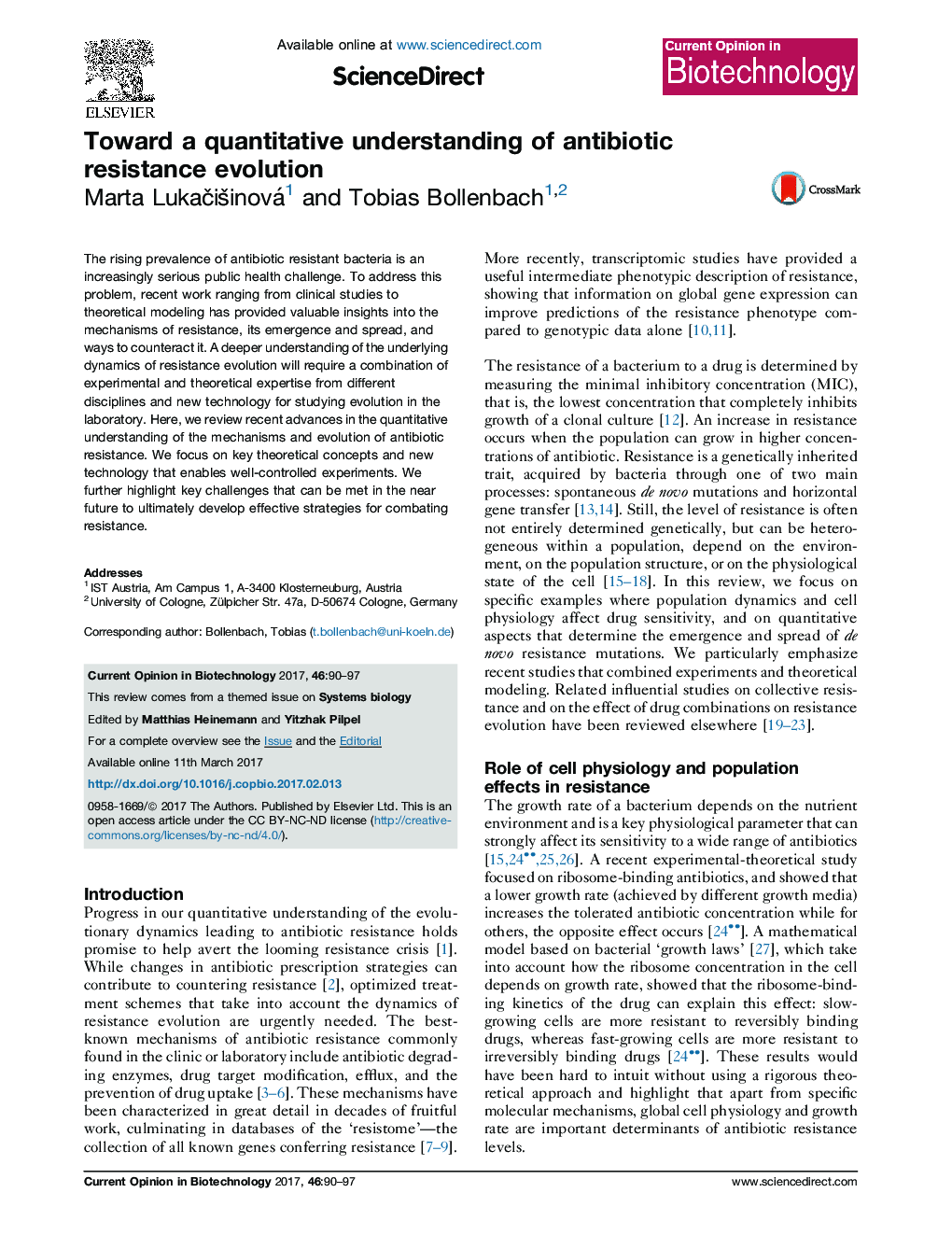| Article ID | Journal | Published Year | Pages | File Type |
|---|---|---|---|---|
| 6451442 | Current Opinion in Biotechnology | 2017 | 8 Pages |
â¢Antibiotic resistance depends on general cell physiology and can vary even among clonal cells.â¢New techniques enable investigating resistance evolution in temporal or spatial antibiotic gradients.â¢Dose-response characteristics of drugs shape the distribution of fitness effects and determine dynamics of resistance evolution.â¢Measured fitness landscapes reveal accessibility of mutational paths to resistance.
The rising prevalence of antibiotic resistant bacteria is an increasingly serious public health challenge. To address this problem, recent work ranging from clinical studies to theoretical modeling has provided valuable insights into the mechanisms of resistance, its emergence and spread, and ways to counteract it. A deeper understanding of the underlying dynamics of resistance evolution will require a combination of experimental and theoretical expertise from different disciplines and new technology for studying evolution in the laboratory. Here, we review recent advances in the quantitative understanding of the mechanisms and evolution of antibiotic resistance. We focus on key theoretical concepts and new technology that enables well-controlled experiments. We further highlight key challenges that can be met in the near future to ultimately develop effective strategies for combating resistance.
